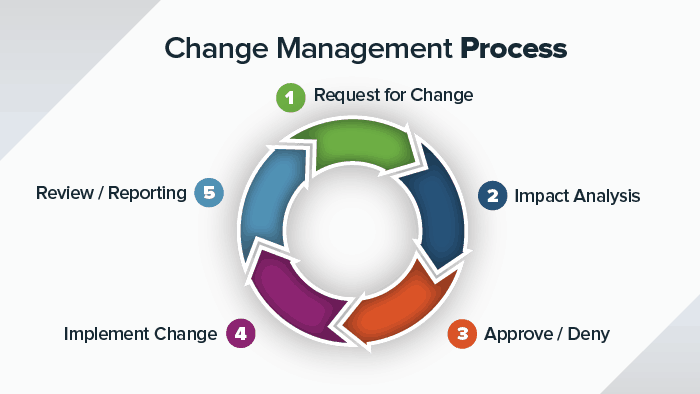Change is an inevitable part of organizational growth and development. Whether it’s adopting new technologies, restructuring teams, or shifting business strategies, effective change management is crucial for ensuring a smooth transition and achieving desired outcomes. Here’s a comprehensive guide on strategies for successful change management implementation.
What is Change Management?
Change management involves the systematic approach to dealing with change, both from the perspective of the organization and the individuals within it. It includes preparing, supporting, and helping individuals and teams navigate changes to achieve organizational goals and minimize disruptions. Successful change management ensures that changes are implemented efficiently and effectively while maintaining employee morale and productivity.
Key Strategies for Successful Change Management

1. Develop a Clear Vision and Objectives
Establish a clear vision for the change initiative and define specific objectives. This helps align stakeholders and provides a roadmap for the change process. A well-articulated vision outlines the purpose of the change, expected benefits, and how it will impact the organization.
Actionable Tip: Create a detailed change management plan that includes goals, timelines, and key performance indicators (KPIs) to measure progress and success.
2. Engage and Communicate with Stakeholders
Effective communication is crucial for managing change. Engage stakeholders early in the process to gather their input, address concerns, and build support. Transparent and consistent communication helps reduce resistance and fosters trust.
Actionable Tip: Use various communication channels such as meetings, newsletters, and digital platforms to keep stakeholders informed and involved throughout the change process.
3. Assess and Address Potential Risks
Identify potential risks and challenges associated with the change initiative. Conduct a risk assessment to understand the impact of these risks on the organization and develop strategies to mitigate them. Addressing potential issues proactively helps prevent disruptions and ensures a smoother transition.
Actionable Tip: Develop a risk management plan that outlines potential risks, their likelihood, impact, and mitigation strategies to manage and address challenges effectively.
4. Provide Training and Support
Offer training and support to help employees adapt to the change. Providing the necessary resources and guidance ensures that employees have the skills and knowledge required to implement the change successfully. Support systems, such as coaching or mentorship, can also help individuals navigate the transition.
Actionable Tip: Create a training program that includes workshops, online courses, and hands-on sessions to equip employees with the skills needed for the change.
5. Build a Change Management Team
Form a dedicated change management team responsible for overseeing the change initiative. This team should include representatives from various departments and levels of the organization. Their role is to coordinate efforts, address issues, and ensure that the change is implemented effectively.
Actionable Tip: Assign roles and responsibilities within the change management team, and establish regular meetings to track progress, discuss challenges, and share updates.
6. Monitor and Measure Progress
Regularly monitor and measure the progress of the change initiative. Use KPIs and performance metrics to evaluate the effectiveness of the change and identify areas for improvement. Continuous monitoring helps ensure that the change is on track and allows for timely adjustments if needed.
Actionable Tip: Implement a feedback mechanism to gather input from employees and stakeholders, and use this feedback to make necessary adjustments to the change process.
7. Celebrate Milestones and Successes
Recognize and celebrate milestones and successes achieved during the change process. Celebrating achievements boosts morale, reinforces positive behavior, and motivates employees to continue supporting the change initiative.
Actionable Tip: Organize events, acknowledgments, or rewards to celebrate key milestones and successes, and communicate these achievements to the entire organization.
8. Foster a Culture of Adaptability
Encourage a culture of adaptability and openness to change within the organization. A positive attitude towards change helps employees embrace new processes and practices, making the transition smoother and more successful.
Actionable Tip: Promote a culture of continuous improvement by encouraging employees to share ideas, provide feedback, and participate in change initiatives.
Implementing Change Management: A Step-by-Step Approach
- Define the Change: Clearly articulate the change, its objectives, and the expected outcomes.
- Engage Stakeholders: Communicate with stakeholders, gather their input, and address their concerns.
- Develop a Plan: Create a detailed change management plan, including goals, timelines, and risk management strategies.
- Provide Support: Offer training, resources, and support to help employees adapt to the change.
- Monitor Progress: Track progress, measure success, and make adjustments as needed.
- Celebrate Success: Recognize and celebrate milestones and achievements to maintain momentum and morale.
Conclusion
Effective change management is crucial for the successful implementation of organizational changes. By developing a clear vision, engaging stakeholders, addressing risks, providing support, and fostering a culture of adaptability, organizations can navigate change effectively and achieve their goals. Embrace change as an opportunity for growth and improvement, and apply these strategies to ensure a smooth and successful transition.
